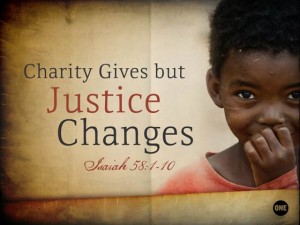When the Giving Gets Tough
It seems every few years I’m struck with a similar dilemma, in a time of disaster relief, where and to whom should I give? With Hurricane Sandy having an impact radius from the Caribbean to Northeast the decisions are not getting easier. I cannot tell you where to give, but I do want to share some of how I make decisions about giving.
Nightmares – The worst-case scenario has occurred. Not the disaster, but the funds that were intended for disaster relief getting diverted. In the aftermath of Hurricane Katrina the US public got one of its first glances at issues the Red Cross had with doing disaster work by stumbling, squandering, and misappropriating relief funds. After the earthquake in Haiti, globally donations poured into Wyclef Jean’s Yele foundation, only to learn that the infrastructure was not on the ground and the organization as grossly mismanaged. And now Hurricane Sandy has left many with donation skepticism given increasing claims that the Red Cross is not doing a sufficient job.

Things I tend to consider in giving:
Capacity – Does the organization that you are sending money to have the capacity to get the needs of the affected met? This question is probably the biggest “black box” that you have to consider. In moments of tragedy everyone wants to help, but the question of do they have the skills or the access to do it is tough to discern. In general, I will sift through sites like Charity Navigator or Charity Watch to see how they rank major charities. Keep in mind; they deal with larger established brands, so you won’t see many local organizations that are asking for assistance. Additionally, they rank “efficiency” which gets defined differently depending on the service. If you’re into number and policy wonky stuff you can check out their methodologies or buy a Guide Star Charity Check report.
Community – One of the things that is important to me when I’m giving is to think about which groups get reached and which groups of people do not. It could be because of geography or demography (race, class, gender, ethnicity). As I have begun to receive messages from loved one in Hurricane affected areas I’m starting to hear them talk about lack of attention that getting to low-income areas like the Rockaways. Media coverage matters, but not everyone has access to that spotlight. While funds may go to storm relief, often where it actually goes is unknown. For this reason, I try to leverage local connections.
I have the advantage of being in New York City and being connected to a number of grassroots organizations that don’t do relief work, instead the do community building. In that way, their weekly food pantries, clothing drives, and know your rights campaigns have endowed them with relationships to some of the harder hit communities. While organizations/businesses like People’s Survival Program, Occupy, or Mrs. Dorsey’s Kitchen will never appear on a Charity Navigator, my opportunity to pick up a phone and call them to lend a dollar or hand is priceless. I’ve seen them say, “I went by area X today, no one is there. We’ll be there tomorrow with X, Y, and Z” because they need it.”
My approach – In the case of Hurricane Sandy, I’m doing my best to spread what I have around. Yes, there is a need for major disaster organizations like Americares to get relief to people, but there is also a need for local grassroots groups to get your assistance. In the end, I have a belief in people that whatever I provide will get where it needs to be. Will it all get there, I doubt it, but if all give something (be it money or volunteering our time) then the load is lighter and the work has greater impact. The thing that I think is the worst-case scenario is to not give at all. The 20, 50, 200 dollars that you give will be put to some work, which is worth it to me. I’d rather give and see some of it lost than to not give and see none of it gained.
Filed under: Activism, Class, Conservatism, Economics, Food for Thought, Health, International, Local Event, New York City


